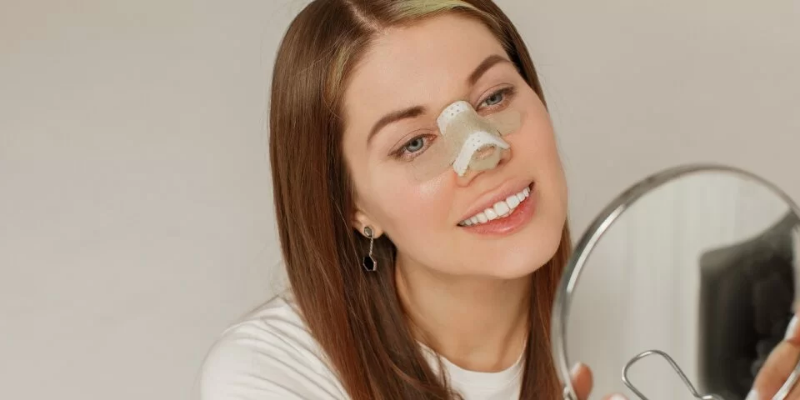What To Expect 3 Weeks After Rhinoplasty?
What to expect 3 weeks after rhinoplasty? In the field of plastic surgery, cosmetic nose surgery is often called cosmetic rhinoplasty. It changes the size and shape of the nose to make the face look better. Many people get this done to feel better about themselves. Rhinoplasty is also used to fix problems that were caused by an accident or were there from birth. We can get rid of bumps and change the size of the nose, nostrils, bridge, or tip with cosmetic surgery.
In terms of how the nose works, the goal of primary rhinoplasty is to make sure the patient can breathe easily and clearly. When the surgery is done for cosmetic reasons, each person has a different goal. Many people feel less confident because their nose isn’t in balance with the rest of their face. This can be caused by aging, an accident, or being born with a defect. Trauma can leave permanent bumps, dents, cuts, or twists on the nose. With cosmetic rhinoplasty, these flaws can be completely removed from the face, making the person look younger and more beautiful.
What To Expect 3 Weeks After Rhinoplasty Step By Step?
In the last step of a nose job, a splint, bandage, or cast is put around the nose to help keep the new shape while the nose is healing. Most people get these supports and any remaining stitches taken out between five and seven days after surgery.
Bruising and swelling around the eyes and nose are common in the first week after rhinoplasty. Most people also get headaches or have trouble breathing through their noses because their nasal passages are swollen. Most people recommend cold compresses and pain relievers that can be bought without a prescription or with one. But please don’t blow your nose to get rid of a stuffy nose. Patients may also need to keep their heads up for a few days, and it will be a few weeks before they can do anything too strenuous again.
Antibiotics are often given after a nose job to decrease the chance of getting an infection. Still, it’s important for patients to keep an eye out for signs of infection, since they can happen even with antibiotics. This can mean that the pain, swelling, redness, fever, red streaks, or pus are getting worse.
Rhinoplasty Recovery Tips
Most people see the most improvement in their swelling and bruises during the second week of recovery. Even though the patient may still feel self-conscious, most of their friends, acquaintances, and coworkers won’t notice any bruising or swelling. Many people can go back to work after the second week, as long as their jobs don’t require them to do anything too hard. The face can be gently washed again, and a little cover-up or makeup can also be put on.
About 70% of the swelling is gone three weeks after a nose job. This is when the patient starts to notice the changes and start to like the way his or her nose looks now. It’s normal and fine to feel a little self-conscious right now. Still, it will take about three or four more weeks to see the finer details, and the nose will feel a little strange. Simple things like smiling or talking can feel strange, and most people feel like their noses are “pulling” or hurt when they rub or bump them. Three weeks after surgery, the tip may still be partly or completely numb. In fact, it can take up to six months or longer for all feeling to return.
Some people also notice that their noses run more, especially if they have allergies. Most people can do strenuous activities again three weeks after rhinoplasty, but the swelling may come back temporarily if they do something hard. Also, the skin around the nose may be more likely to get pimples or burn in the sun.
When Can You Get Second Rhinoplasty?
Aside from a big bump or injury, there aren’t many things a patient can do to ruin the outcome for good. The most important thing for a patient to do is to do everything their doctor tells them to do. It can help lower the risk of complications and speed up the time it takes to get better.
Also, you should know that the results of a nose job last forever. If you need more rhinoplasty surgeries, it can take up to two or more years to see the changes.
People often think of rhinoplasty as a minor surgery. But, as with any surgery, there are risks, complications, and time spent getting better. Patients need to make sure they can give their bodies the care they need to fully recover from the surgery.
A primary rhinoplasty is a nose job that is done for the first time. When someone has a secondary rhinoplasty, it means that they have already had a rhinoplasty surgery. Most of the time, these procedures are harder than first-time rhinoplasty surgeries because the surgeons have to deal with scar tissue and any healing problems caused by the first surgery.




